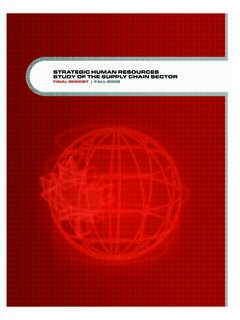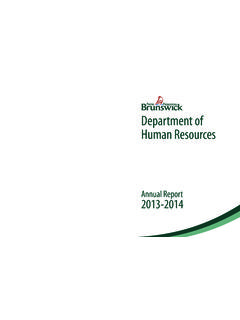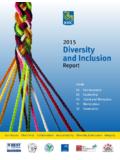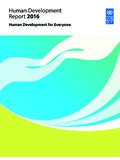Transcription of Status of the World’s Soil Resources. Chapter 14: …
1 Status of the World's Main Report soil Resources Chapter 14. regional assessment of soil Changes in North America FAO | Giuseppe Bizzarri INTERGOVERNMENTAL. TECHNICAL PANEL ON SOILS. Disclaimer and copyright Recommended citation: FAO and ITPS. 2015. Status of the World's soil Resources (SWSR) Main Report. Food and Agriculture Organization of the United Nations and Intergovernmental Technical Panel on Soils, Rome, Italy The designations employed and the presentation of material in this information product do not imply the expression of any opinion whatsoever on the part of the Food and Agriculture Organization of the United Nations (FAO) concerning the legal or development Status of any country, territory, city or area or of its authorities, or concerning the delimitation of its frontiers or boundaries.
2 The mention of specific companies or products of manufacturers, whether or not these have been patented, does not imply that these have been endorsed or recommended by FAO in preference to others of a similar nature that are not mentioned. The views expressed in this information product are those of the author(s). and do not necessarily reflect the views or policies of FAO. ISBN 978-92-5-109004-6. FAO, 2015. FAO encourages the use, reproduction and dissemination of material in this information product. Except where otherwise indicated, material may be copied, downloaded and printed for private study, research and teaching purposes, or for use in non-commercial products or services, provided that appropriate acknowledgement of FAO as the source and copyright holder is given and that FAO's endorsement of users'.
3 Views, products or services is not implied in any way. All requests for translation and adaptation rights, and for resale and other commercial use rights should be made via or addressed to FAO information products are available on the FAO website and can be purchased through Status of the World's soil Resources | Main Report Disclaimer and copyright 14 | regional assessment of soil Changes in North America regional Coordinator: Hempel, J. (ITPS/United States). regional Lead Author: D. Pennock (ITPS/ canada ). Contributing Authors: Adams, M-B.
4 (United States), Basiliko, N. ( canada ), Bedard-Haughn, A. ( canada ), Bock, M. ( canada ), Cerkowniak, D. ( canada ), Cruse, R. (United States), Dabney, S. (United States), Daniels, L. (United States), Drury, C. ( canada ), Fanning, D. (United States), Flanagan, D. (United States), Grayston, S. ( canada ), Harrison, R. (United States), Hempel, J. (ITPS/United States), Lobb, D. ( canada ), Parikh, S. (United States), Reid, ( canada ), Sheppard, S. ( canada ), Smith, ( canada ), Watmough, S. ( canada ). Status of the World's soil Resources | Main Report regional assessment of soil Changes | 442.
5 In North America | Introduction Although canada and the United States of America have a long history of collaborative research activity in soil science, there have been no previous attempts at a regional assessment of threats to soil functions. Nor are there any ongoing institutional arrangements that coordinate soil assessment or management across the two countries, unlike trans-border water issues which are adjudicated by an International Joint Commission or atmospheric issues, such as when cross-border problems with acidification were the focus of the Air Quality Agreement of 1991.
6 Cross-border coordination is further complicated by the lack of a common soil classification system between the two countries. In the absence of a regional reporting system for threats to soil functions, this Chapter draws on the appropriate national reporting systems and on the expertise of leading soil scientists where national assessments do not exist. The main data source used for canada is the Agri-Environmental Indicators report series, which was developed by Agriculture and Agri-Food canada (AAFC). This series began in 1993 with the intent of producing science-based environmental indicators specific to the agriculture and agri-food sector.
7 The work presented in this Chapter is drawn from the forthcoming 4th Agri-Environmental Indicators report (Clearwater et al., 2015). The series estimates change in the indicators in five-year periods beginning (for most indicators) in 1981. Indicators that assess primary agriculture are calculated using mathematical models or formulas that integrate information on soil , climate and landscape, mainly derived from the soil Landscapes of canada (SLC). ( soil Landscapes of canada Working Group, 2007), with information on crops, land use, land management and livestock from the Census of Agriculture and other custom data sets from provincial agencies, the private sector, remote sensing, etc.
8 Information on the specific indicators is available in AAFC (2013). The 4th Agri-Environmental Indicators report provides information for soil erosion, change in SOC, and nutrient imbalance, and this information is featured in Sections and of this Chapter . Leading Canadian scientists selected by the Canadian Society of soil Science provided information on the remaining threats. The major information source used for the United States is the National Resources Inventory (USDA, 2013a). This report provides a range of land use and management statistics and national estimates for sheet and rill erosion and for wind erosion.
9 The report provides data for the period 1982-2010. Data are gathered annually by the National Resources Conservation Agency and major reports are released at five-year intervals. Information on specific threats such as salinization was also provided by the STATSGO2 database ( soil Survey Staff, 2014). Leading United States soil scientists selected by the soil Science Society of America also provided information for the United States. | regional stratification and soil threats | regional stratification and land cover The spatial framework used in this Chapter is the multi-level Ecological Regions of North America developed by the Commission for Environmental Cooperation (Commission for Environmental Cooperation, 1997).
10 The Level II ecoregions are used as a consistent geographical reference (Figure ). The contiguous 48 United States, Hawaii, Puerto Rico, and the United States Virgin Islands cover almost 88 Bha of land and water. About 71 percent of this area is non-Federal rural land nearly 57 billion ha (USDA, 2013a). The non-Federal rural lands of the United States are predominantly rangeland (165 million ha), forest land (166 million ha), and cropland (146 million ha) with smaller areas composed of developed land, pastureland and water.
















